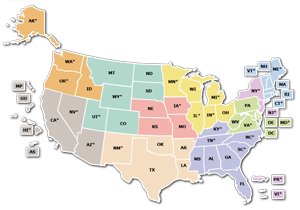- OSHA’s On-Site Consultation Program Brochures
- eTools, eMatrix, Expert Advisors and v-Tools
- Help for Employers
- The Consultation Program (PDF)
- Job Safety and Health - It's the Law! (PDF)
- Small Business
- Worker Rights
On-Site Consultation
Process and Benefits
This no-cost safety and health consultation program is completely separate from the OSHA inspection effort. Primarily targeted for smaller businesses, employers can find out about potential hazards at their workplace, improve programs that are already in place, and even qualify for a one-year exemption from routine OSHA inspections.
The consultation is confidential and will not be reported routinely to the OSHA inspection staff. No citations or penalties will be issued and your only obligation is to correct serious job safety and health hazards--a commitment which you are expected to make prior to the actual visit and carry out in a timely manner.
Using OSHA's no-cost consultation service lowers injury and illness rates, ultimately saving both employers and employees from the cost of accidents while raising morale and increasing productivity rates. [More...]
During an On-Site Visit
Because consultation is a voluntary activity, you must request it (see OSHA's Consultation Directory). The consultant will discuss your specific needs with you and set up a visit date based on the priority assigned to your request, your work schedule, and the time needed for the consultant to adequately prepare to serve you.
The consultant will start with an opening conference with you before beginning the walk through. The consultant will study your entire workplace, pointing out safety or health risks (some which may not have an applicable OSHA standard). After the walk-through, the consultant will review the findings with you before leaving. Finally, the consultant will send you a detailed written report explaining the findings and confirming any abatement periods agreed upon. They may also contact you from time to time to check your progress. [More...]
Annually, on average, responding to requests from small employers looking to create or improve their workplace safety and health programs, OSHA's On-Site Consultation Program conducts over 26,000 visits to small business worksites covering approximately 1 million workers across the nation.
